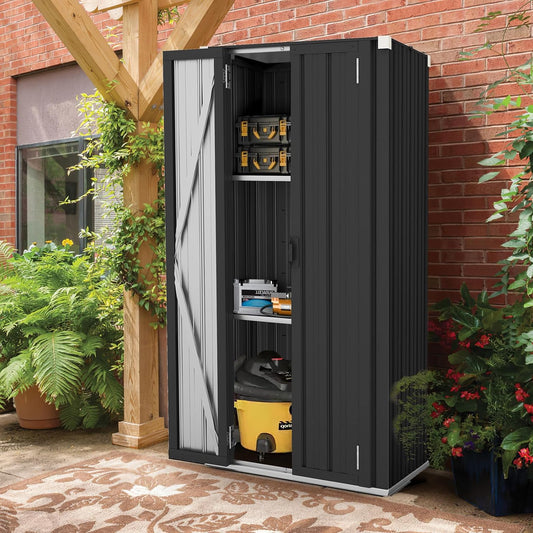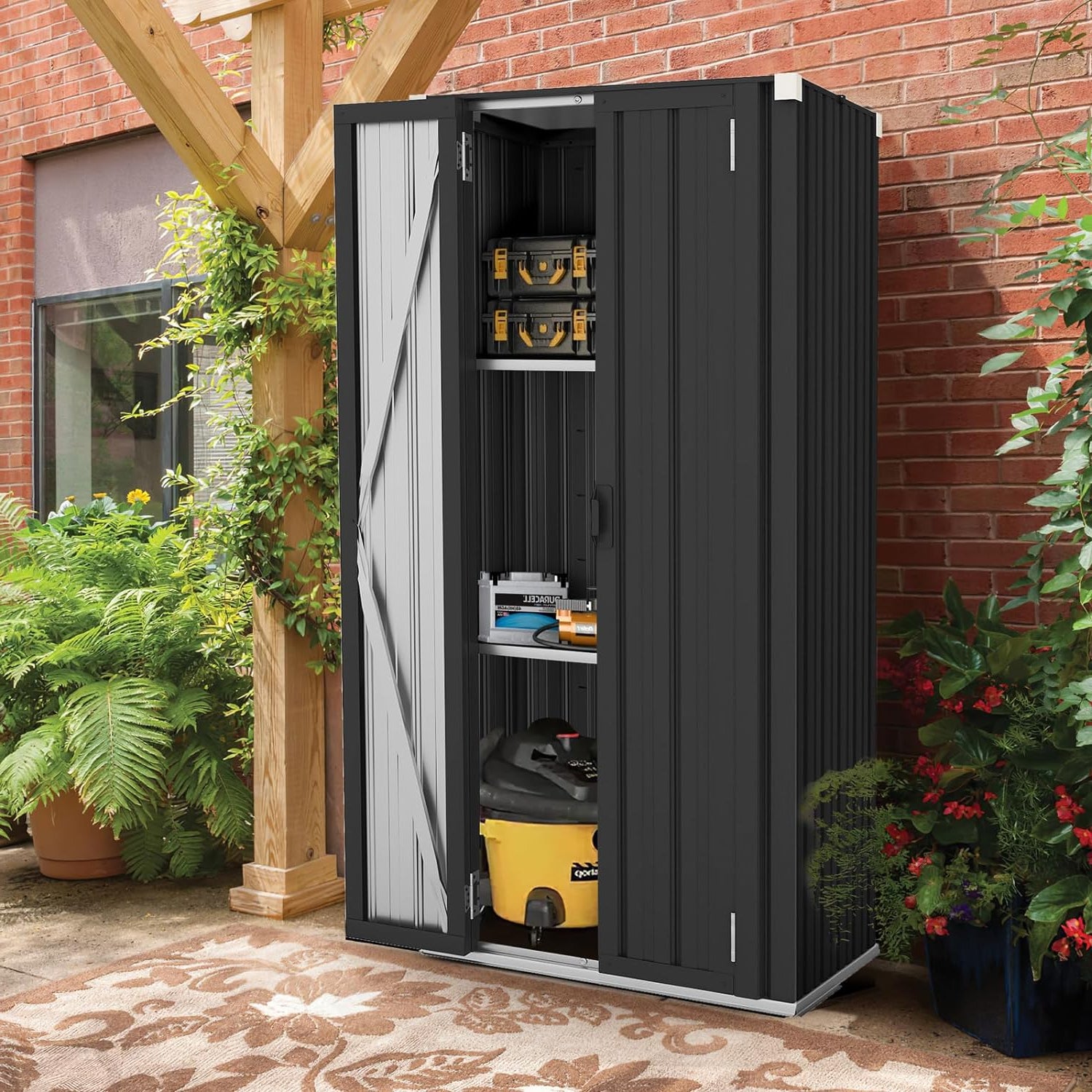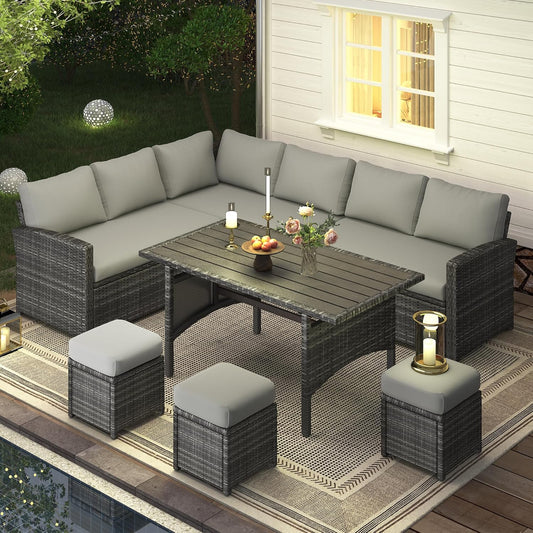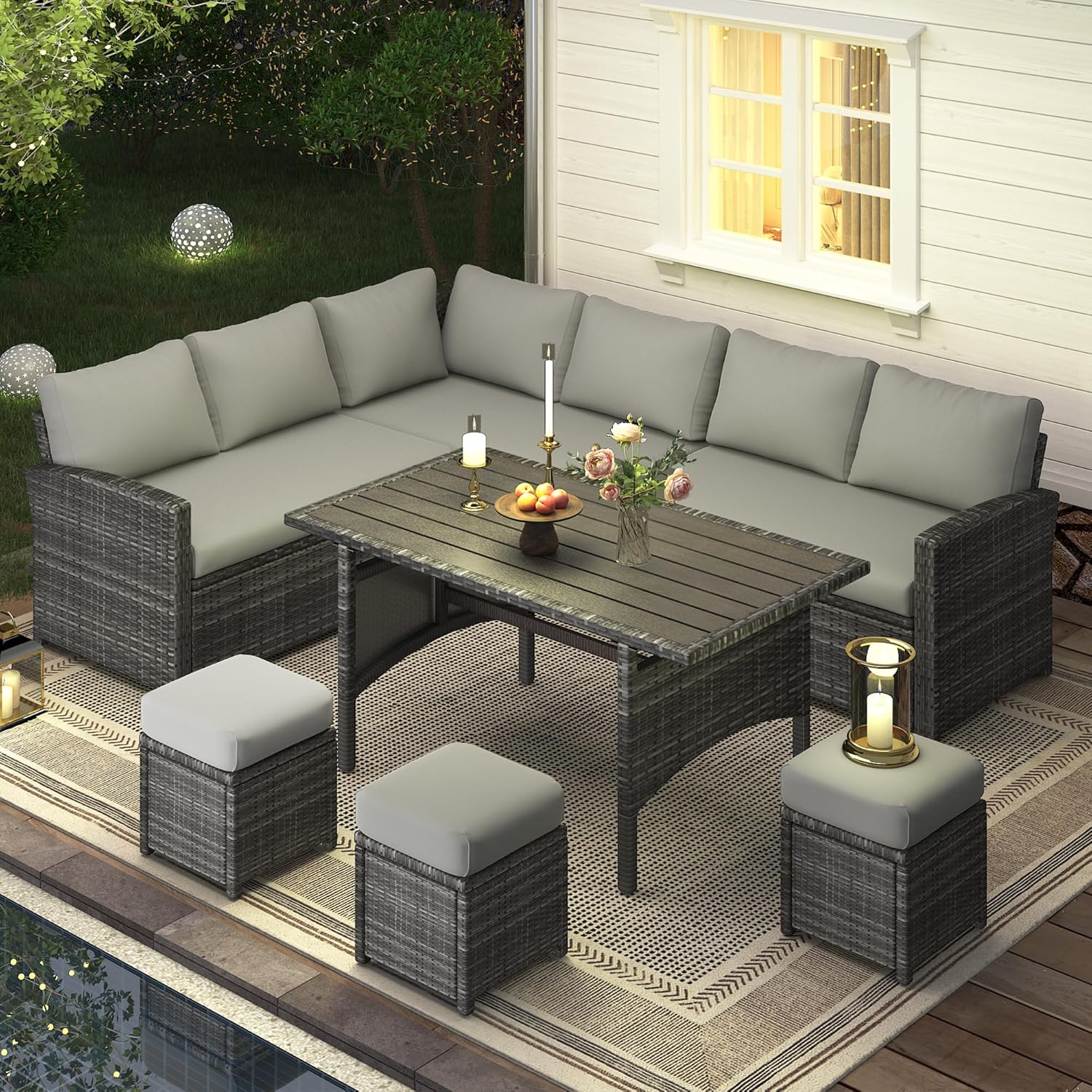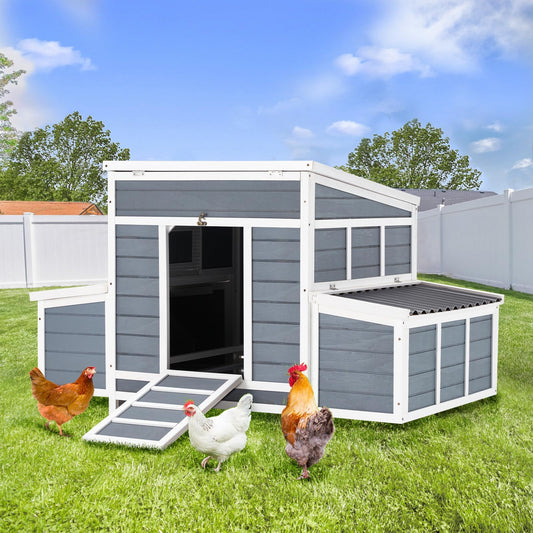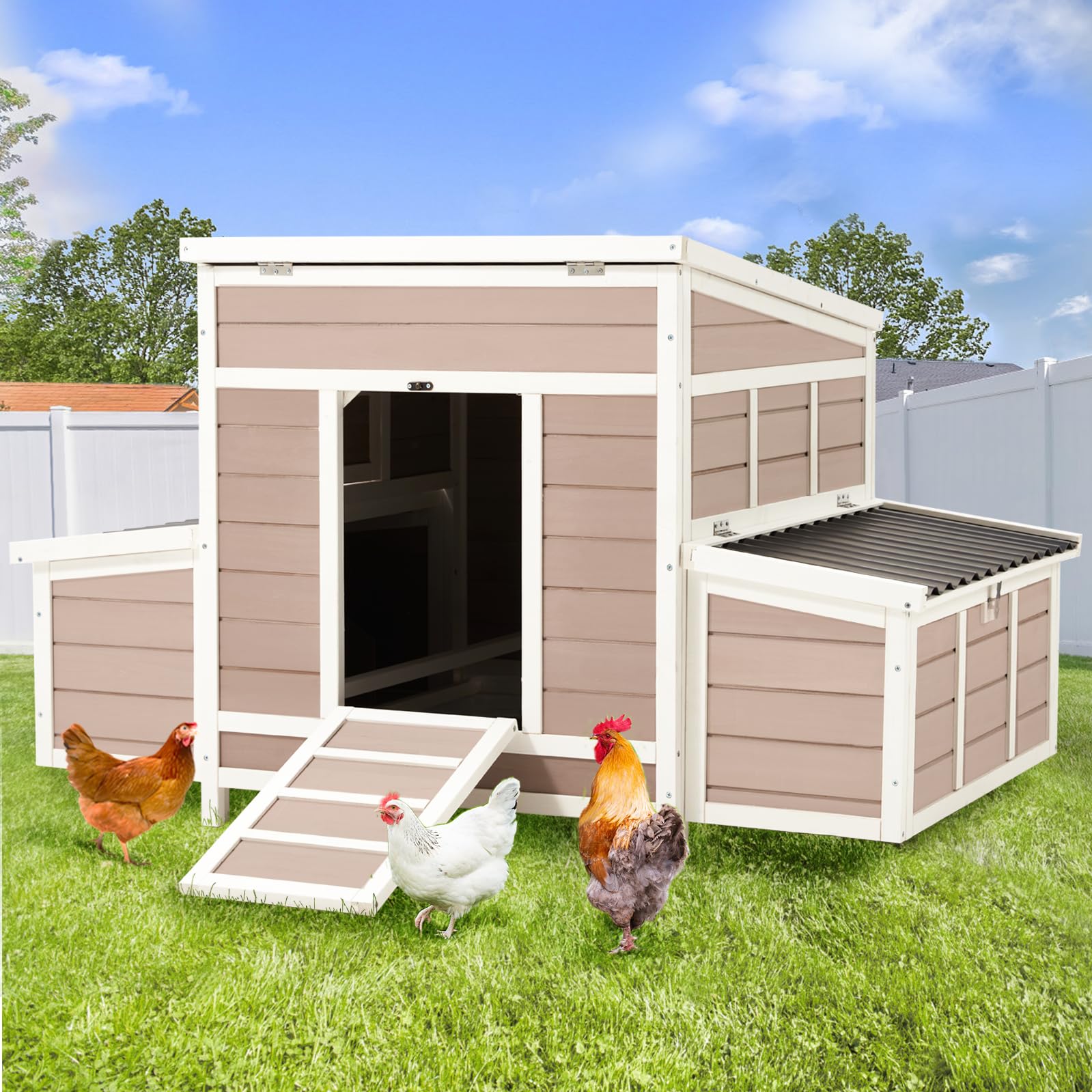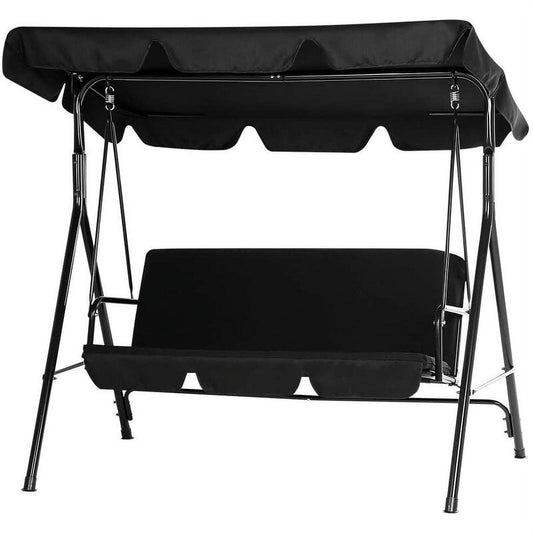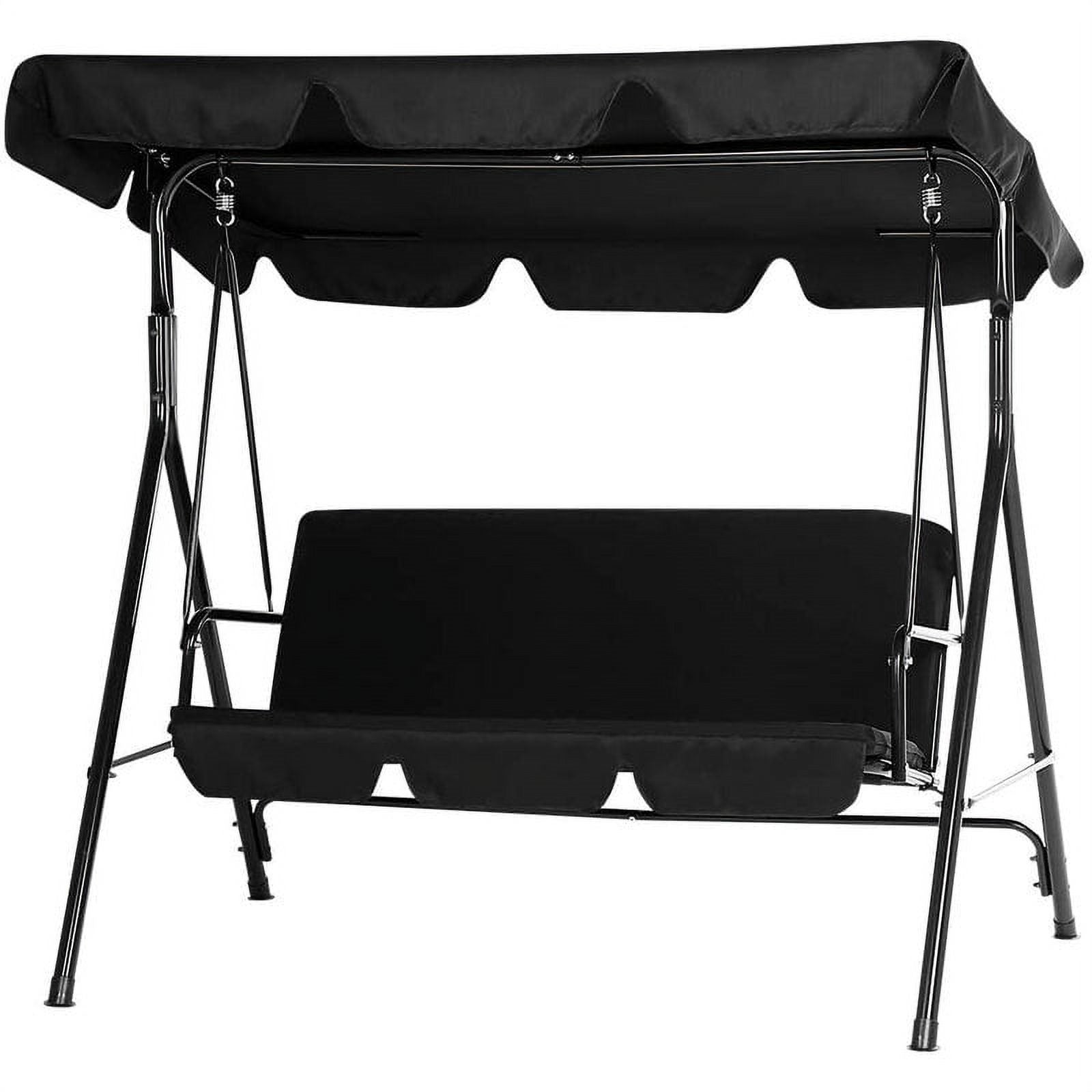Spending time outdoors is one of the best parts of warm weather—whether you’re hosting friends or relaxing alone. But nothing ruins that vibe like dirty patio furniture: dusty metal frames, stained cushions, or mildew on wicker. Knowing how to clean patio furniture isn’t just about making it look nice—it’s about keeping it usable for years.
From metal patio furniture sets that get covered in pollen to wicker patio conversation sets with crumbs in the weave, every type needs a little care. Even the best outdoor furniture sets won’t last if you ignore grime, mold, or sun damage. In this guide, we’ll break down why cleaning matters, how to tackle different materials, and pro tips to keep your furniture looking fresh. Let’s start with why regular cleaning is a must.
1. Why Regular Cleaning Matters for Outdoor Furniture
Outdoor furniture faces a lot—sun, rain, pollen, bird droppings, and even food spills. Skipping cleaning might not seem like a big deal at first, but over time, it can turn a nice set into something you want to replace. Here’s why making time to clean patio furniture is worth it:
It Extends the Life of Your Furniture
Dirt and moisture are the biggest enemies. For example, metal patio furniture sets can develop rust if pollen or rain sits on them—rust eats away at the metal, making frames wobbly or even breaking them. Wicker (whether natural or PE rattan in a rattan patio furniture set) traps moisture in its weave, which leads to mold that weakens the material. A quick weekly wipe can stop this damage before it starts. Most outdoor furniture is built to last 5–10 years, but with regular cleaning, you can stretch that to 10–15 years.
It Keeps Your Space Inviting
Let’s be honest: No one wants to sit on a cushion covered in bird droppings or set a drink on a dusty table. Clean patio furniture makes your outdoor space feel welcoming, whether you’re using modern outdoor furniture sets for a sleek look or a cozy wicker patio conversation set. It also saves you from last-minute scrubbing before guests arrive—no more panicking because your best outdoor furniture sets look messy.
It Prevents Stains from Setting In
Spills happen—soda, BBQ sauce, or sunscreen can drip onto cushions or frames. If you wipe them up right away, they’re easy to remove. But if you let them sit, they’ll soak in. A ketchup stain on fabric cushions might come out with soap and water if cleaned in a day, but after a week in the sun, it could become permanent. Regular cleaning (even a quick sweep) catches these spills before they turn into stubborn marks.
It Stops Mold and Mildew
Rain or morning dew leaves moisture on furniture, and mold loves that. Mold isn’t just gross—it can cause musty smells and even trigger allergies. This is especially common in wicker patio conversation sets, where the weave traps moisture, or on fabric cushions. Regular cleaning dries out these spots and removes mold spores, keeping your furniture (and the air around it) fresh.
|
Furniture Type |
Risk of Neglect |
Benefit of Regular Cleaning |
|
Metal patio furniture sets |
Rust, weakened frames |
Shiny, sturdy frames for years |
|
Rattan patio furniture set |
Mold in weave, brittle material |
Flexible, mold-free wicker |
|
Wicker patio conversation set |
Trapped crumbs, musty smells |
Fresh, inviting seating |
|
Modern outdoor furniture sets |
Faded finishes, stained surfaces |
Sleek look stays intact |
As you can see, cleaning patio furniture isn’t just a chore—it’s an easy way to protect your investment, keep your space looking great, and avoid costly replacements.
The YODOLLA 6 Pieces Aluminum Patio Furniture Set in light gray is a prime example of mold-resistant design. Its rust-resistant metal frame and moisture-proof storage tables prevent dampness from lingering, while the upgraded water-resistant fabric on cushions minimizes mold growth—staying fresh with regular cleaning to protect your outdoor space.

2. Know Your Materials: Cleaning by Type
Not all patio furniture is made the same, and neither is cleaning it. The way you clean a wicker set is totally different from how you tackle metal—using the wrong method could scratch, warp, or damage the material. Let’s break it down by the most common types.
Wicker (Natural & PE Rattan)
Wicker and rattan are popular for their cozy, casual look—think a wicker patio conversation set or a rattan patio furniture set. But their woven design traps dirt, crumbs, and moisture, so they need gentle, thorough cleaning.
Natural wicker: This is made from plant fibers, so it’s more delicate. Start by vacuuming the weave with a brush attachment to suck up crumbs and dust. Then mix mild dish soap with warm water, dip a soft cloth in it (don’t soak!), and wipe down each strand. Avoid getting it too wet—natural wicker can warp. After cleaning, let it air dry completely in the shade.
PE rattan (synthetic): More durable than natural wicker, it can handle a bit more moisture. Use a soft-bristled brush to loosen dirt in the weave, then spray with a mix of soap and water. Wipe with a cloth, then rinse lightly with a hose (keep the pressure low!). Dry with a towel to prevent water spots.
Pro tip: For both types, check the corners of a wicker patio conversation set—crumbs and leaves love to hide there!
Metal (Aluminum, Steel, Wrought Iron)
Metal patio furniture sets are tough and sleek, but they’re prone to dust, pollen, and (in some cases) rust. Whether you have a modern aluminum set or a classic wrought iron design, the goal is to remove grime without scratching the finish.
Aluminum: Lightweight and rust-resistant, but it can get chalky or dusty. Wipe down with a damp cloth and mild soap—this works for most dirt. For stubborn spots (like bird droppings), let soapy water sit for 5 minutes, then wipe. Dry with a towel to avoid water spots.
Steel or wrought iron: These can rust if moisture sits on them. Start by brushing off loose dirt with a soft brush. Use soapy water and a cloth to clean, then dry immediately. If you see small rust spots, gently scrub with a wire brush (soft!) to remove them, then touch up with rust-resistant paint to stop spread.
Fun fact: Many metal patio furniture sets come with a protective finish—keeping them clean helps that finish last longer, so your set stays shiny season after season.
Wood (Teak, Eucalyptus, Acacia)
Wooden patio furniture adds a warm, natural vibe to outdoor spaces, but it’s prone to dirt, mildew, and sun damage. Whether you have a teak dining set or an acacia lounge chair, the key is to clean gently and protect the wood’s natural oils.
Teak: This hardwearing wood has natural oils that resist water, but it still needs care. Start by sweeping off loose dirt with a soft brush. Mix mild soap and warm water, then use a sponge to wipe down the surface—avoid harsh scrubbers, which can scratch the wood. Rinse with a hose (low pressure!) and let it air dry. Teak will develop a silvery patina over time if left untreated—if you prefer its original color, apply teak oil after cleaning to restore the warm tone.
Eucalyptus & Acacia: These woods are slightly softer than teak, so extra gentleness is key. Use the same soap-and-water method, but don’t let water pool on the surface (it can cause warping). After drying, a coat of outdoor wood sealer once a year will help protect against moisture and UV rays.
Plastic & Resin
Plastic and resin furniture (common in modern outdoor furniture sets or budget-friendly options) is low-maintenance, but it still gets dusty, stained, or sticky from sunscreen. The good news? It’s easy to clean.
Everyday dirt: Wipe down with a damp cloth and mild soap—this works for most dust or pollen. For a deeper clean, mix 1 part vinegar with 3 parts water in a spray bottle, spritz the surface, and wipe dry. Vinegar cuts through sticky residue without damaging the plastic.
Tough stains (like grass or berry juice): Make a paste with baking soda and water, apply it to the stain, and let it sit for 10 minutes. Scrub gently with a soft brush, then rinse—this works even on white plastic that’s prone to discoloration.
Fabric Cushions & Upholstery
Cushions on a wicker patio conversation set or metal patio furniture sets take the brunt of spills, sweat, and rain. Cleaning them properly keeps them looking fresh and prevents mold.
Machine-washable covers: Check the tag first—if they’re removable and machine-safe, wash them in cold water on a gentle cycle with mild detergent. Skip the dryer (heat can shrink or fade fabric); air dry instead.
Non-removable cushions: Mix soap and warm water, dip a sponge in it, and blot (don’t rub!) stains. For mildew, add 1 tablespoon of bleach to the soapy water (test a hidden spot first to avoid fading), then blot. Rinse with a damp cloth and let the cushions dry completely in the sun—propping them up on their sides helps air circulate.
The YODOLLA 7 Pieces Metal Patio Furniture Set, Green, is a great example of easy cushion care in action. Its removable, machine-washable cushion covers simplify cleaning up spills or sweat, while the water-repellent, UV-resistant fabric helps fend off rain and sun damage—keeping the set looking fresh with minimal effort.

3. Step-by-Step Guide to Cleaning Patio Furniture Frames
No matter if you’re cleaning a rattan patio furniture set or metal patio furniture sets, the basic process for frames follows the same steps. Here’s how to do it right, without missing spots:
Clear the area and prep the furniture: Remove cushions, pillows, or any decor from the frames. If there’s loose dirt, leaves, or cobwebs, use a broom or a vacuum with a brush attachment to sweep them off—this makes the next steps easier.
Mix your cleaning solution: For most frames, a bucket of warm water with 1–2 teaspoons of mild dish soap works. Avoid harsh cleaners (like bleach or ammonia) unless dealing with mold—they can damage finishes, especially on wood or wicker.
Scrub gently: Use a soft cloth or sponge (a soft-bristled brush for woven materials like wicker) to wipe down the frame. Pay extra attention to crevices: the legs of metal patio furniture sets (where dirt collects), the weave of a wicker patio conversation set, or the joints of wooden chairs.
Rinse (if needed): For metal, plastic, or synthetic rattan, a quick rinse with a hose (low pressure!) removes soap residue. Skip rinsing for natural wicker or wood—just wipe off excess soap with a damp cloth to avoid over-wetting.
Dry thoroughly: Use a towel to wipe down metal or plastic frames (this prevents water spots). For wicker or wood, let them air dry in the shade—direct sun can cause warping or cracking.
Pro tip: If you’re cleaning multiple pieces (like a full set of the best outdoor furniture sets), do one type at a time (all metal first, then wicker) to avoid mixing cleaning methods and accidentally damaging a material.
4. How to Clean and Protect Outdoor Cushions
Outdoor cushions—whether on a wicker patio conversation set, metal patio furniture sets, or modern outdoor furniture sets—are where comfort meets function. But they’re magnets for spills, sweat, and rain. Cleaning them keeps them soft, mold-free, and ready to use. Here’s how:
Start by taking cushions off and shaking them to remove crumbs, dirt, or leaves. For woven cushions (like those on a rattan patio furniture set), use a soft brush to sweep out debris from seams—dust loves hiding there.
Treat stains before a full clean. For food or drink spills, mix 1 teaspoon of mild detergent with 2 cups of warm water. Dip a damp cloth in the solution and blot the stain (rubbing pushes it deeper). Blot with a clean, damp cloth to rinse, then let it air dry. For oil or sunscreen stains, sprinkle baking soda, let it sit 15 minutes to absorb oil, then vacuum before spot-cleaning.
Do a deep clean every 1–2 months. If covers are removable and machine-washable, zip them closed and wash on a gentle cycle with cold water. Air dry flat (hanging stretches them). For non-removable cushions, scrub with soapy water and a soft brush, rinse with low-pressure water, then prop upright to dry. A fan speeds this up—moist foam breeds mold.
Protect cushions between cleans. Use waterproof covers during rain or when not in use. After cleaning, spray with UV- and water-resistant fabric spray to repel stains and sun damage.
With these steps, your cushions stay fresh—no more avoiding the “stain seat” when guests come over!
5. Dealing with Mold, Mildew, and Stains
Even with regular care, outdoor furniture can get mold, mildew, or stubborn stains—especially after rain. But most issues are fixable with simple solutions. Let’s break it down:
Mold & Mildew (fuzzy spots with a musty smell) thrive in damp areas, like wicker weaves or under cushions. For hard surfaces (metal, plastic, wood, wicker), mix 1 part bleach with 4 parts water, spray the area, let sit 10 minutes, scrub, rinse, and dry. Test on hidden spots first—bleach can lighten colors. For fabric cushions, use 1 cup warm water + 1 tablespoon detergent + 1 tablespoon vinegar. Blot the area, let sit 15 minutes, rinse, and dry.
Stubborn Stains need targeted fixes. For rust on metal patio furniture sets, make a paste with lemon juice and salt, let sit 2 hours, scrub, and rinse. Grease on plastic? Wipe with rubbing alcohol. Tannin stains (from leaves/berries) on wood? Use a baking soda-water paste, let sit 30 minutes, scrub, and rinse.
Remember: The longer stains or mold sit, the harder they are to remove. Check your best outdoor furniture sets weekly—catching issues early saves time!

6. Pro Tips: Tools & DIY Cleaners That Work
Cleaning patio furniture doesn’t require expensive products. Here’s what you need to get the job done easily:
A few basic tools are all you need: soft-bristled brushes (great for wicker weaves and cushion seams), microfiber cloths (trap dust on metal or plastic), and a garden hose with low pressure (for rinsing metal, plastic, or synthetic rattan).
For cleaners, homemade mixes work best. An all-purpose solution of 1 cup vinegar, 1 cup water, and 1 teaspoon dish soap handles most dirt on metal patio furniture sets, wicker patio conversation sets, or modern outdoor furniture sets. For rust on metal, a paste of lemon juice and baking soda does the trick.
Save time with simple hacks: clean all furniture of the same material (like all metal first) to avoid switching tools, or use a leaf blower on low to quickly remove dust from surfaces.
7. Maintenance Schedule: How Often Should You Clean?
Sticking to a simple schedule keeps your furniture in good shape without feeling like a chore:
Weekly: Do a quick sweep with a cloth or brush to remove dust, crumbs, or leaves—this works for all types, from metal patio furniture sets to a rattan patio furniture set. It stops dirt from building up.
Monthly: Deep clean frames (using the steps for their material) and spot-clean cushions. This is key for preventing mold, especially in humid weather.
Seasonally (every 3–4 months): Do a full deep clean—wash removable cushion covers, scrub tough stains, and check for mold or rust. This preps furniture for heavy use (like summer) or storage (like winter).
Adjust if needed: If you have pets or live in a dusty area, clean a bit more often. For the best outdoor furniture sets, this schedule keeps them looking new for years.
Conclusion
Knowing how to clean patio furniture is the key to keeping your outdoor space inviting and your furniture long-lasting. Whether you have metal patio furniture sets, a wicker patio conversation set, or modern outdoor furniture sets, the process is simple: use gentle tools, homemade cleaners, and stick to a basic schedule.
Regular cleaning—even quick weekly wipes—stops dirt, mold, and stains from ruining your furniture. With these tips, you’ll spend less time scrubbing and more time enjoying your outdoor space, knowing your furniture looks great and will last for seasons to come.















